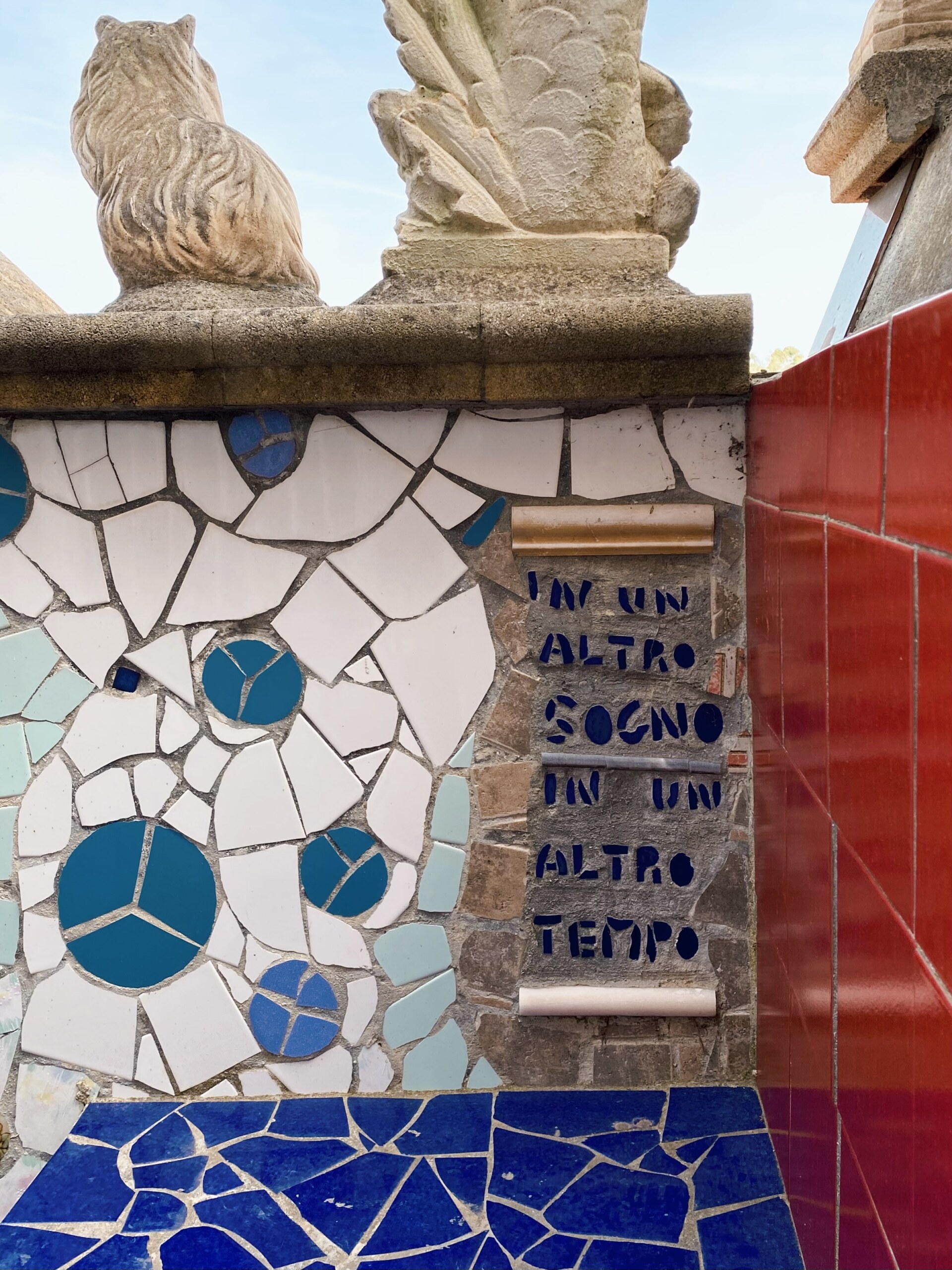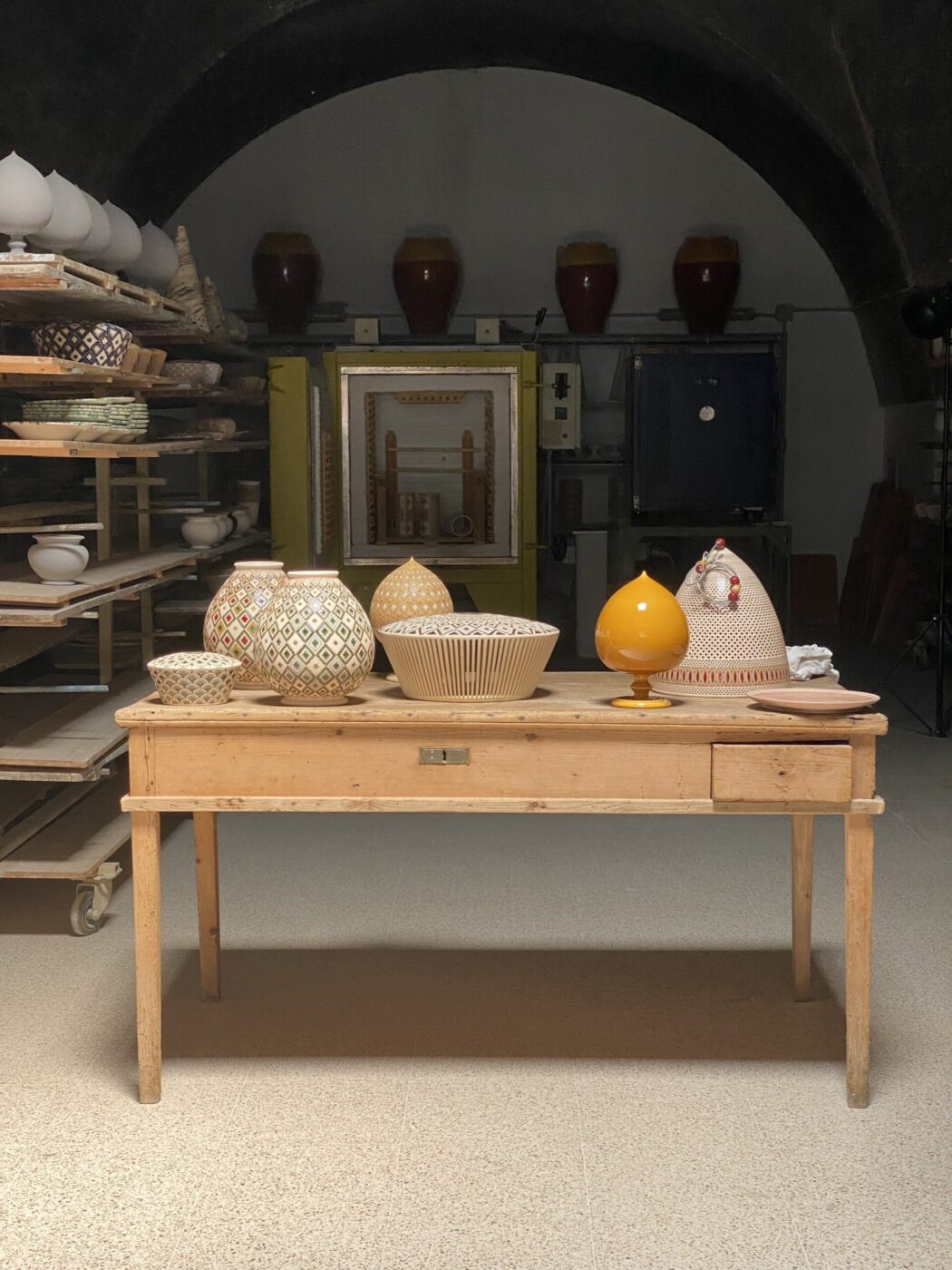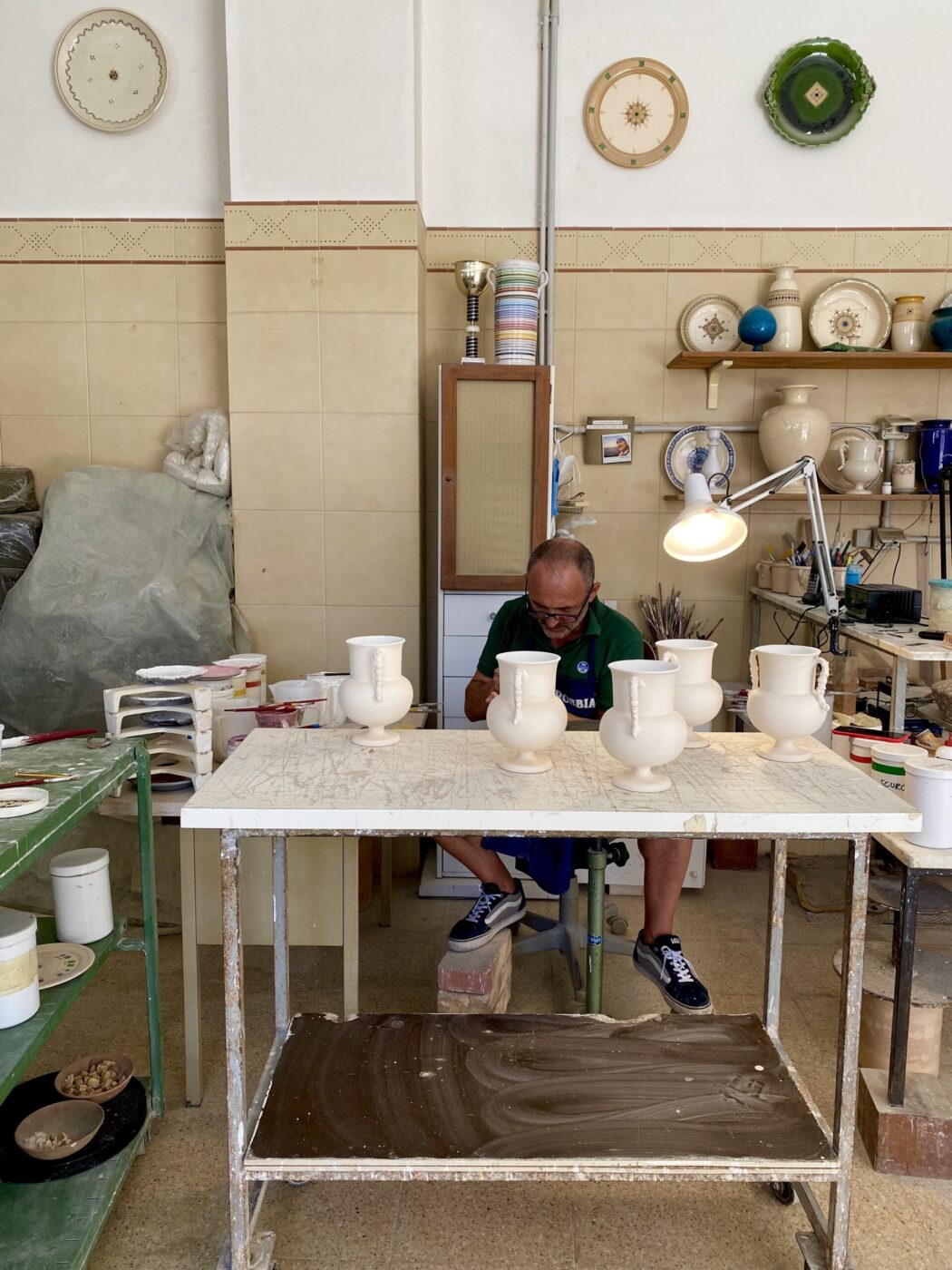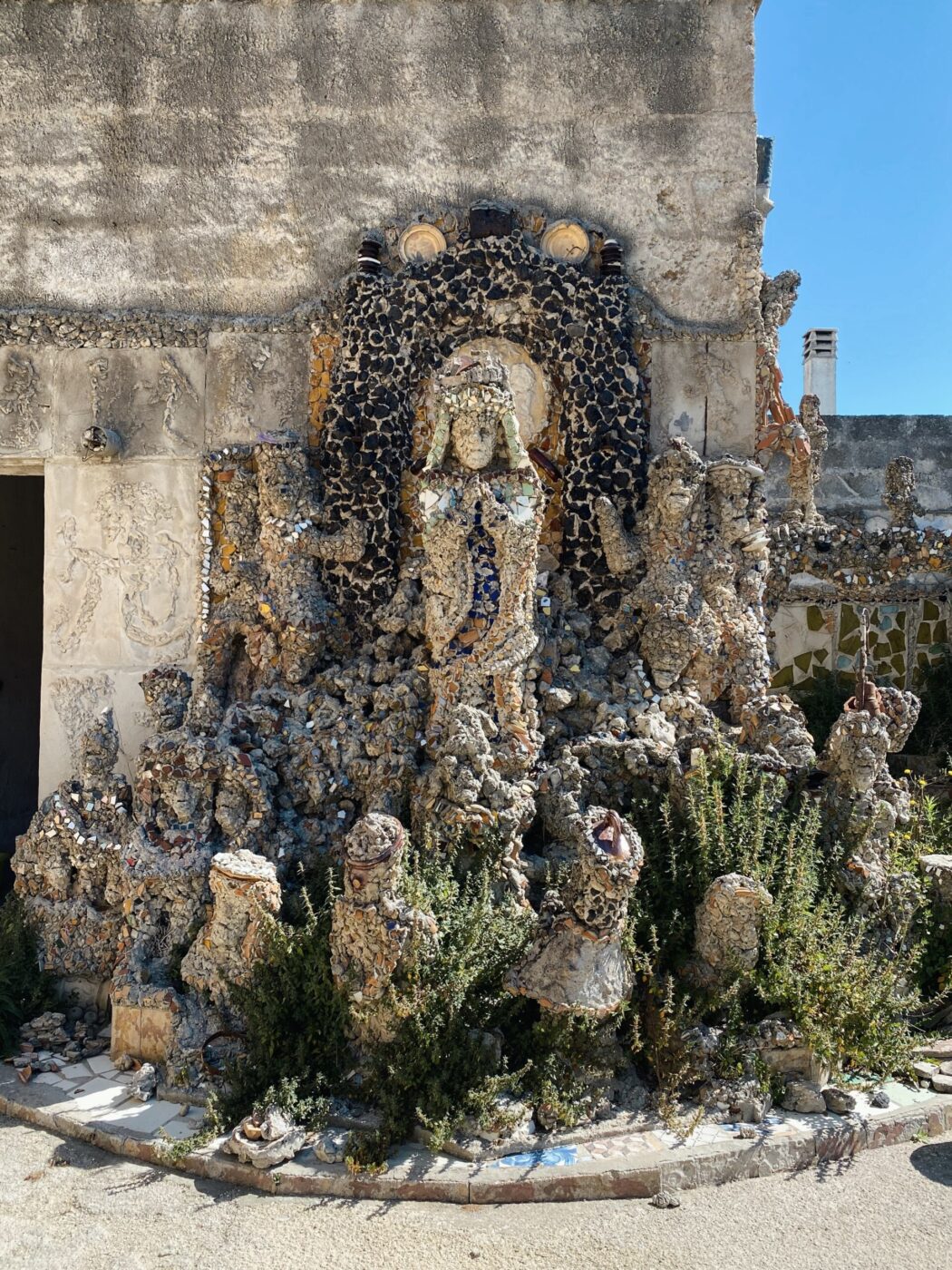If patience is a virtue, it’s also an art form in Puglia. In an age where we can press a button and expect instant miracles and masterpieces, it seems like a rather foreign concept to devote decades of one’s life to producing a single artistic creation by hand; stone by stone, tile by tile, scrap by scrap. Absurd, some might say!
There are three lesser-known artistic gems in Puglia where our good old friends–time and patience (remember them!)–find physical form in curious feats created over the course of decades, works that embody a relentless dedication to one’s art, and in some cases, the boundless workings of the imagination. Ezechiele Leandro’s Santuario della Pazienza (San Cesario) and L’eremo di Vincent Brunetti (Guagnano) were not created for praise or glory from the external world, but rather, as the most natural and necessary means of self-expression, perhaps to the point of obsession. And then there’s the “city of ceramics”, Grottaglie, where centuries-old artisanal traditions are being reinterpreted via a new wave of creative perspectives and dialogues that are engaging artists from all over the world. Labors of love, in every sense of the phrase.
SANTUARIO DELLA PAZIENZA (THE SANCTUARY OF PATIENCE)
SAN CESARIO
Ten minutes south of Lecce by train and we reach the little township of San Cesario where everybody knows everybody, more or less. Via Cerundolo seems like a normal residential street, neat and flat, but there’s something strange about that corner house. It’s all boarded up under lock and key, with a few apocalyptic-looking cement figures guarding the front yard that look like they’ve survived a volcanic eruption. The house has primitive-style stone murals and odd mosaic formations made from material scraps covering its facade. Something about that house is definitely peculiar.
It’s the house of artist, sculptor, and poet Ezechiele Leandro (1905-1981), who spent the decades of his later life secluded, by choice, from the rest of the world while creating a largely unfathomable sculptural feat behind its imposing cement fences. Leandro–by many accounts a “complex” and even “troubled” man who was considered an outsider by the San Cesario community (not that these definitions meant much to him)–rarely left the house he first started building in 1955. It was a kind of artistic laboratory where he trialed, tested, and experimented with scrap materials he salvaged from rubbish piles, giving them new life in his “Art Brut” (also known as “raw art”) sculptures that bypassed all stylistic conventions of the outside world.
Let’s get to the part where Leandro covered his 720 sqm backyard with a mass of 200-plus cement sculptures made entirely from scrap materials: the Santuario della Pazienza (Sanctuary of Patience), as he named it. Created figure-by-figure over the decades that Leandro lived in the house, this stony labyrinth depicts a series of Christian scenes including the Apocalypse, the Passion of Christ, the Last Judgment, and life-size recreations of the Virgin Mary who looks as, shall we say, “organic” as we’ve ever seen her. The artist, who referred to his sculptures as “mute” and “nameless” figures that resemble “skeletons and skulls of ancestors” also depicted other symbols and narratives in his garden including the Tree of Life, the Fountain of Knowledge, and scenes from Dante Aligheri’s Inferno. Heavy stuff, literally.
By a stroke of luck, I’m able to track down Leandro’s grandson Antonio Benegiamo, custodian of the now largely abandoned house-museum. He agrees to show us inside, a once-in-a-blue-moon occurrence, as one of the street’s residents later tells us. The house is under the care of Ministero dei Beni Culturali (Ministry of Cultural Heritage), and some much-needed conservation works were said to have been undertaken a few years ago by the Superintendency of Archaeology, Fine Arts, and Landscape (Brindisi, Lecce, and Taranto)–though they were seemingly left incomplete. For passers-by, the only hint as to what exists within is a tantalizing glimpse of the Santuario della Pazienza from a gap between the iron gate and the house’s fence. As we discover upon entering, the house itself has scarcely been lived in since Ezechiele Leandro was alive, and its sparse, dark rooms bear only a few of the artist’s early primitive-style paintings and sculptures.
Outside in the garden, we find the Santuatio della Pazienza shrouded in the kind of foreboding silence one might expect in a kind of limbo-land, somewhere between heaven and hell. Good morning to a few hundred sculptures who haven’t had visitors in quite a while! Between the hazards of vicious thorny weeds and near-crumbing protrusions of cement limbs, spears and horns, navigating the feat is a treacherous voyage. Even though we never met Leandro, he is everywhere in this garden; his own life experiences, beliefs, hopes, and suffering are imprinted in the crumbling face of every single statue. The decaying site renders one completely silent; there are few words to describe the experience of being enveloped by such raw expressions of life, death, suffering, and basically all of the human experience, as seen through the eyes of Ezechiele Leandro.
The Santuario della Pazienza is the work of Leandro’s lifetime, and it remains locked away from the rest of the world in a house-museum with no indication of being “open” to the public anytime soon. It’s deemed a hazardous site, and far too fragile to welcome visitors in its current state. In a hand-written letter that still lies on a cabinet in the entryway of Leandro’s house, he reflects: “…one day these sculptures will have their place in a proper book…that ignites the mind of a good reporter who observes the monsters living inside the mind of a man who was a stranger to the people around him.”
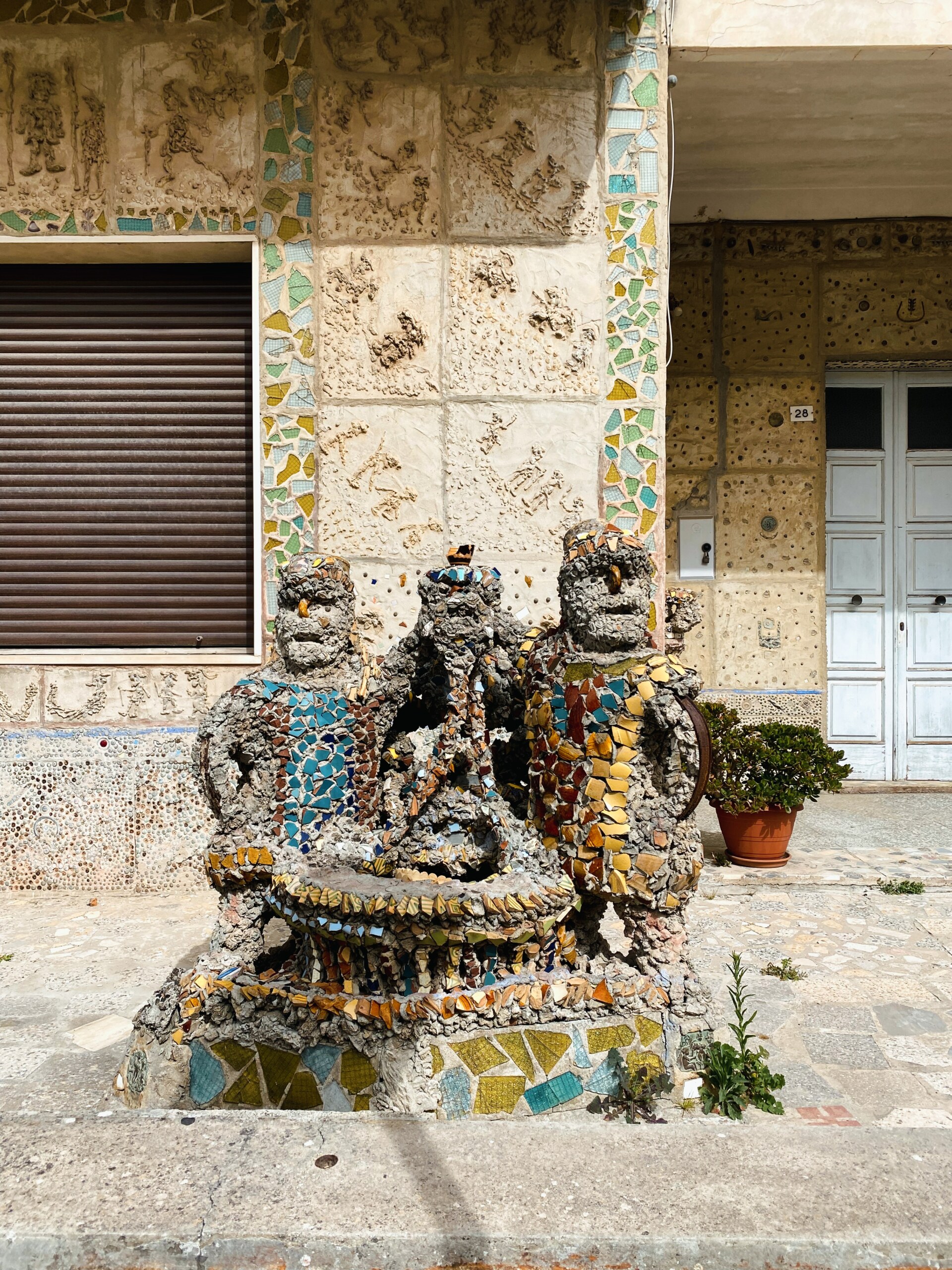
Santuario della Pazienza; Photo by Alexia Petsinis
L’EREMO DI VINCENT (VINCENT CITY)
GUAGNANO
Artist Vincent Brunetti has no neighbors where he lives hidden amongst sun-drenched fields in the township of Guagnano, about half an hour northwest of Lecce. This means that if he wanted to create a kaleidoscopic kingdom of architectural and artistic chaos and call it his home, he could. And he did. L’eremo di Vincent (also known as Casa di Vincent Brunetti or Vincent City) was created by the artist and a few like-minded collaborators over the course of 30 years and counting. Brunetti still lives and works in his surreal abode, and some say it’s just as brilliant and bewildering as he is.
Your toes start tingling from the minute you arrive at Vincent City. Its multicolour mosaic front gates greet you with a grand welcome message which translates to something like: “THE KINGDOM OF HEAVEN IS IN YOUR MIDST. BLESSED ARE THE MEEK BECAUSE THEY WILL INHERIT THE EARTH.” And below it in red tiles: “I LOVE YOU FOREVER”. Meekly but apparently blessed and loved eternally, we proceed to enter his house-museum that’s open to anyone who is firstly able to locate it, and secondly, willing to surrender entirely to the assault it launches on the senses.
The site originated as a votive church on the outskirts of Guagnano, a little township that is so (shall we say…) “peaceful” that you can hear the whispers of washing hanging on the line. In 1993, Brunetti–a multidisciplinary artist who had returned to his home soil in northern Salento after a painting apprenticeship in Milan–decided to transform the property into a self-referential house-museum curated with a preposterous horde of statues, motifs, mosaics, texts, paintings, furniture, ornaments, scraps, and treasures, one on top of the other. There seems to be no rhyme or reason as to how Brunetti has arranged this eclectic mass of found, created, and recycled objects–upstairs and downstairs, inside and outside the house. And yet, it feels like everything exists in its perfectly rightful place there. If you asked Brunetti where a particular one of the 200-odd Virgin Mary statues is located in his house, he’d be able to tell you the exact coordinates, without thinking twice.
As the name “Vincent City” suggests, the site is more than a crazy art-house. Every day for the past three decades the artist has worked on creating a “city” devoted to art; “a place of psychic relaxation” where the reality of the “outside world” dissolves entirely. It’s a kind of triumphant statement of artistic universality, expressed through an unthinkable mix of symbols, cultural references, and stylistic influences that make you feel like you could be anywhere in the world. What’s more, the property is divided up into a microcosm of different little hidden mini-kingdoms–the Salita dei Girasoli (Sunflower staircase) and the mosaic quarter depicting Christ’s crucifixion, for example–and that’s all before you even enter the front door of the house itself.
“I do it because my heart tells me to do it. I do it because every day I wake up and I just have to do it,” says Brunetti about his compulsion to make art, completing his second painting of the morning in his studio next to the main house. He likes painting to a playlist of techno beats and Betty Curtis classics. Call him eclectic or something else, it’s clear that Brunetti eats, breathes, and dreams in art. Art is his life force, his reason for existing, and when we understand this about him, we begin to realize how such an unimaginable feat could come to life. The process of building Vincent City was (and is) for Vincent something as vital and instinctive as breathing. He says he’s had more visitors to his house-museum over the past few years, as more people catch glimpses of Guagnano’s hidden artistic gem in a friend of a friend’s social media post, a fantasyland that looks like it’s on another planet. Everyone is welcome at Vincent Brunetti’s house, especially those who relish the idea of getting lost in a place that is, as inscribed in one of its mosaic wall panels: “In altro sogno, in un altro tempo” (“In another dream, in another time”).
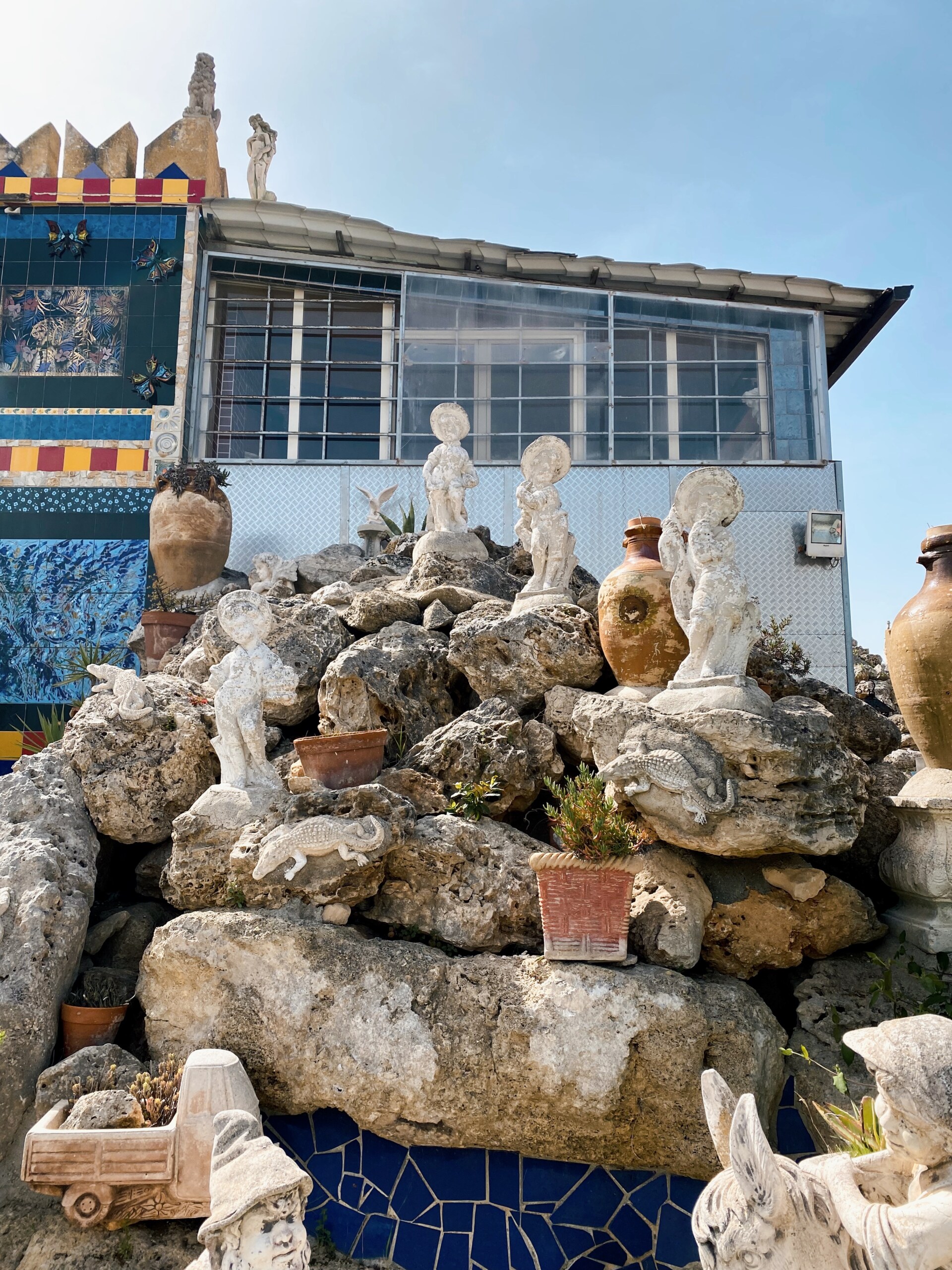
Vincent City; Photo by Alexia Petsinis
TRADITIONAL CERAMICS AND NEW-WAVE CREATIVITY IN GROTTAGLIE
Grottaglie, ceramics–the two are almost interchangeable. In fact, most people visit the small town in the province of Taranto (about two and a half hours northwest of Lecce) for that very reason. Its centuries-long history of artisanal ceramics production is thanks to the richness of clay-yielding rock formations in the area, and a little (big) dig around town in past years there has unearthed ceramic fragments and artworks from the period between the Paleolithic and the Middle Ages.
Spend a few hours strolling Grottaglie’s Quartiere delle Ceramiche and you’ll meet over 70 artisans in their bottegas, who continue these historical traditions of producing ceramic tiles and ornaments that have been passed down from one generation to the next. Among them are Ceramiche Giuseppe Fasano, Ceramiche Bromo Oronzo, and Ceramiche Andrea Antonazzo, who’ll proudly show you their glistening collections of pomi (a traditional Pugliese pine cone-like object said to bring good luck) and pupe (a doll typically depicted with a mustache and swords recounting an ancient feudal fable)–ornaments which are hand-crafted with masterful patience and precision every day. And if you haven’t had your fill of clay after exploring the Quartiere delle Ceramiche, there’s also Grottaglie’s Museo della Ceramica, which houses more than 500 ceramic treasures dating from the 8th century BC to today. Indeed, the town’s ceramics heritage is rich: it’s everywhere you look on the streets, and it no doubt defines its artisanal charm from a visitor’s perspective. But there’s a new wave of creative energy stirring in Grottaglie. It’s evolving the town’s artistic identity beyond traditional ceramics and putting it on the world map.
“Gradually I see more artists from all over the world come here to experiment and learn ceramic techniques from our skilled artisans, but they bring their own fresh point of view to it,” says Angelo Milano, a Grottaglie local who founded StudioCromie Gallery and printing studio, which hosts contemporary art residencies, exhibitions, and creative collaborations that draw international visitors to the town each year.
By chance, you might stumble across StudioCromie Gallery on Via Santa Sofia, heading away from the Quartiere delle Ceramiche. It’s an old ceramics factory Milano has converted into a sleek gallery space that hosts a running rotation of exhibitions and projects throughout the year. Milano is also the mind behind a series of progressive and experimental festivals and creative collectives in Grottaglie including the former Fame Festival (which enlivened the town’s streets with huge contemporary art murals), the Chiasmo Festival (an experimental music festival featuring local and international guests), and thefuckups (a curated collective of markets, performances, and showcases featuring a diverse lineup of artists and creatives). Clearly, Milano’s dynamic foresight and refreshing perspectives are breathing new life into Grottaglie’s artisanal heart, showing a future beyond ceramics and craft-focused traditions (which might seem outdated to some).
“Ceramics are slowly becoming fashionable again, but in a non-traditional way. Sure, Grottaglie will always celebrate its ceramics heritage and traditions, which brings a sense of comfort and familiarity to many people here. But it’s exciting to see how international artisans who come here for residencies and festivals are reinterpreting these traditions in new ways through their work,” Milano says, as he shows us through his print shop opposite the main gallery.
Rome wasn’t built in a day, and neither were Puglia’s artistic curiosities for that matter. There’s a jackpot to discover behind locked gates, down dirt roads, and away from town centers: a sanctuary of crumbling scrap-sculptures hidden from public view in San Cesario, an artist’s house parading as a frenzied kingdom devoted to art, a town where contemporary perspectives are reinvigorating centuries-old artisanal traditions. Labors of love stir the soul in Puglia.


